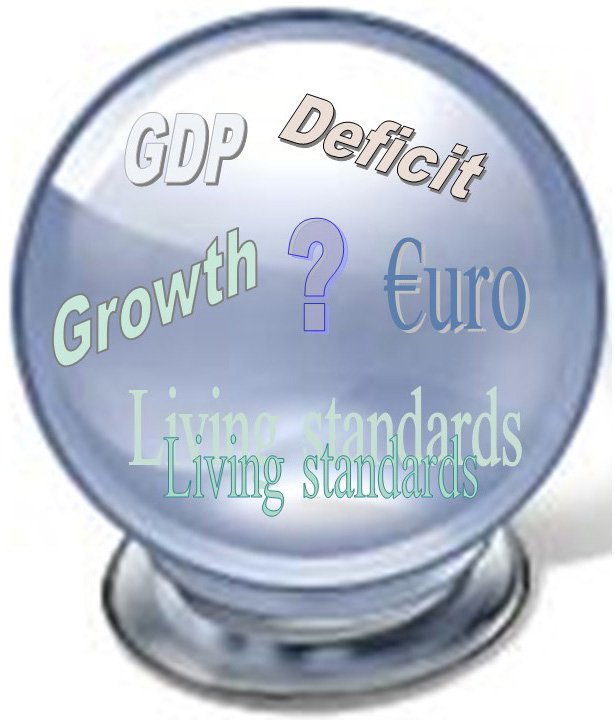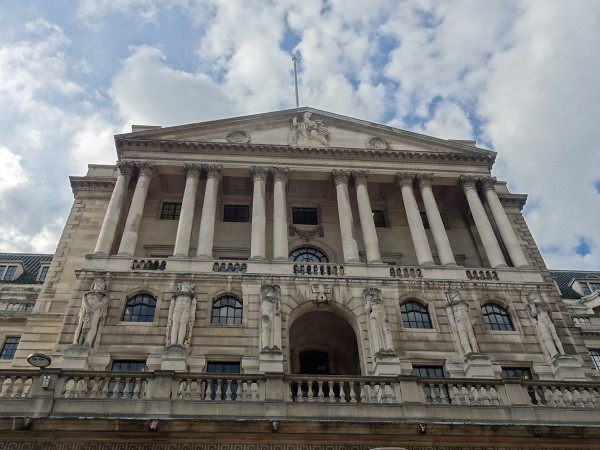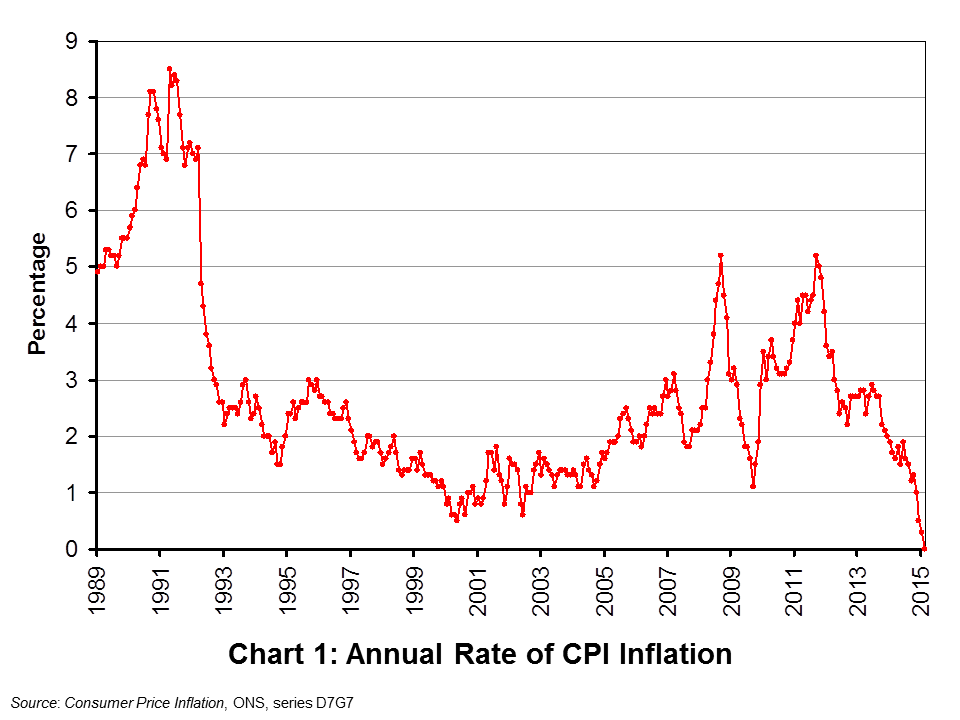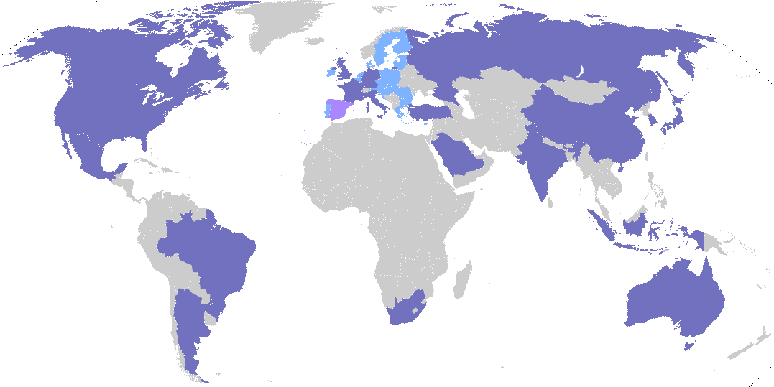 The UK general election is on May 7. In the campaign during the run-up to the election the economy will be a major issue. All parties will use economic data to claim that the economy has performed well or badly and that the prospects are good or bad. As economics students you will, no doubt, be asked to comment on these claims by your friends. So where can you get analysis of the data that is not biased towards one party or another?
The UK general election is on May 7. In the campaign during the run-up to the election the economy will be a major issue. All parties will use economic data to claim that the economy has performed well or badly and that the prospects are good or bad. As economics students you will, no doubt, be asked to comment on these claims by your friends. So where can you get analysis of the data that is not biased towards one party or another?
One source is the Institute for Fiscal Studies. It is respected by politicians of all parties as an impartial presenter and analyser of economic data. In fact, it is fiercely independent. But at election time, when often quite dramatic claims are made by politicians, the IFS often comments on whether the data support such claims.
An example occurred when David Cameron claimed that if Labour were elected, working families would face a £3028 tax rise to fund the party’s spending commitments. The IFS said that the claim was misleading as, even on the Conservatives’ assumptions, it was was based on the cumulative increase over five years, not the annual increase, and was not per household but only per working household. The IFS also said that the Conservatives’ assumptions were wrong and not in accordance with the Charter for Budget Responsibility, with which the Labour party agreed.
Expect the IFS to criticise more claims as the election campaign progresses: not just by the Conservative party but by the other parties too. After all, the IFS is not partisan and is prepared to challenge false economic claims from whatever party. Expect also that the political parties will cherry pick whatever statements by the IFS seen to favour them or criticise their opponents.
You can also expect political bias in the newspapers that report the campaigns. Even when they present facts, how they present them and which facts they choose to include and which to ignore will be a reflection of their political bias. So even newspaper reporting of what the IFS says is likely to be selective and nuanced!
Why IFS boss Paul Johnson counts in this tightest of general elections The Guardian, Larry Elliott (30/3/15)
David Cameron’s claim that Labour would raise taxes by £3,000 is ‘not sensible’, says the IFS Independent, Jon Stone (30/3/15)
‘tax rise’ is shot down by IFS The Guardian, Patrick Wintour (30/3/15)
We will borrow more if we win the election, Labour admits The Telegraph, Christopher Hope (29/3/15)
Chancellor accused of U-turn on austerity: Top economist says £20bn fiscal boost lurking in Budget is ‘remarkable reversal’ This is Money, Hugo Duncan (19/3/15)
Questions
- Distinguish between positive and normative statements. How might politicians blur the distinction in their claims and counter-claims?
- Identify three series of macroeconomic data from at least two independent organisations. For what reasons might the data be (a) unreliable; (b) used by political parties to mislead the electorate?
- In what ways can political parties use economic data to their own advantage without falsifying the data?
- How may public-sector deficit and debt statistics be interpreted in ways to suit (a) the current government’s case that the public finances have been well managed; (b) the opposition case that the public finances have been badly managed?
- Use data to analyse an economic claim by each of at least three political parties and the extent to which the claims are accurate.
- The above links are to articles from four UK national newspapers: The Guardian, the Independent, The Telegraph and the Daily Mail (This is Money). Identify political bias in the reporting in each of the articles.

The latest inflation figures, as detailed in February’s Consumer Price Inflation Statistical Bulletin, show that the annual rate of CPI inflation hit zero in February. This is down from 0.3 per cent in January. While inflation is now well outside the 1-3 per cent target range that the Bank of England is charged with meeting, perhaps a more pertinent question is whether the UK is teetering on the brink of deflation – and the risks that may carry.
To get a better sense of the latest inflation picture we need to delve deeper into the numbers and look at the patterns in the prices that make up the overall Consumer Price Index. Interestingly, these shows that five of the 12 principal product groups that make up the index are currently experiencing price deflation.
As explained in Consumer Price Inflation: The 2015 Basket of Goods and Services, produced by the ONS, around 180,000 prices quotations are collected each month for around 700 representative items. These goods and services fall into one of 12 broad product groups. These include, for example, food and non-alcoholic beverages and transport.
The items included in each of the 12 product groups are reviewed once a year so that the chosen items remain representative of today’s spending patterns. A monthly price index is calculated for these 12 broad groupings, known as divisions, and for sub-categories of these. For example meat is a category within food and non-alcoholic beverages. The overall CPI is a weighted average of the 12 broad groupings.
 The annual rate of CPI inflation in February 2015 was zero. This means that the price of the representative basket of goods and services was unchanged from its level in February 2014. As Chart 1 shows (click here for a PowerPoint of the chart), the annual rate of CPI inflation series goes back to January 1989 and this is the first time it has fallen to zero. Its average over this period is in fact 2.7 per cent. The recent fall is quite stark with the rate of CPI inflation in June 2013 close to the top-end of the Bank of England’s target range at 2.9 per cent.
The annual rate of CPI inflation in February 2015 was zero. This means that the price of the representative basket of goods and services was unchanged from its level in February 2014. As Chart 1 shows (click here for a PowerPoint of the chart), the annual rate of CPI inflation series goes back to January 1989 and this is the first time it has fallen to zero. Its average over this period is in fact 2.7 per cent. The recent fall is quite stark with the rate of CPI inflation in June 2013 close to the top-end of the Bank of England’s target range at 2.9 per cent.
 Of the 12 product groups, five constitute 10 per cent or more of the overall weight of the CPI index. These weights are dependent on the relative level of expenditure comprised by each division.
Of the 12 product groups, five constitute 10 per cent or more of the overall weight of the CPI index. These weights are dependent on the relative level of expenditure comprised by each division.
Chart 2 shows the annual rates of inflation for these five groups (click here for a PowerPoint of the chart). The most heavily-weighted component is transport (14.9%), which includes the price of fuel and passenger transport. Here we observe deflation with prices 2.7 per cent lower year-on-year in February. This is the fourth consecutive month where its annual rate of price inflation has been negative.
The second most heavily-weighted component within the CPI index is recreation and culture (14.7%), which includes games, toys and audio-visual equipment. Here too we see the emergence of deflation. In February 2015 prices were 0.8 per cent lower than in February 2014. Deflation is most prevalent in the fifth most heavily-weighted component (11.0%): food and non-alcoholic drinks. The price for this division of the CPI was 3.3 per cent lower in February 2015 as compared with February 2014. In nine of the last ten months the price of food and non-alcoholic drinks, helped by aggressive price competition in the grocery sector, has been lower year-on-year.
February also saw a negative annual rate of inflation emerge for the first time in the CPI division capturing furniture and household equipment and appliances (-0.3 per cent). Further, miscellaneous services, which include personal care and personal effects (e.g. jewellery) saw an annual rate of deflation for the eight consecutive month. The annual rate of inflation for miscellaneous services stood at -0.4 per cent in February. However, February did see an upturn in price inflation for clothing and footwear with prices 1.7 per cent higher than a year earlier while the price of alcohol and tobacco was 3.8 per cent higher year-on-year.
The detailed inflation numbers do reveal the extent to which many CPI divisions are already characterised by deflation. It is interesting to note that in A Comparison of Independent Forecasts published monthly by HM Treasury, the forecast for the final quarter of 2015 is for the annual rate of CPI inflation to be running at 0.8 per cent. An important reason for this is that the effect of falling fuel prices from November 2014 will begin to drop out of the year-on-year inflation rate calculations. The removal of this effect should help to prevent the specter of deflation provided that peoples’ inflationary expectations remain anchored, i.e. exhibit stickiness. If these were to be revised down, however, this would further contribute to downward pressure on prices since input price inflation – including wage inflation – would again be expected to fall.
Articles
U.K. on Brink of Falling Prices as Inflation Rate Drops to Zero Bloomberg, Tom Beardsworth (24/3/15)
UK inflation rate falls to zero in February BBC News (24/3/15)
Britain sees no inflation in February for first time on record Reuters, David Milliken and Andy Bruce (24/3/15)
Inflation hits a record zero boosting household incomes Independent, Clare Hutchinson (24/3/15)
Inflation Hits 0% As Food Costs Fall Further Sky News (24/3/15)
Inflation falls to zero in February as Britain heads to deflation Telegraph, Szu Ping Chan (24/3/15)
UK inflation hits zero for the first time on record Guardian, Angela Monaghan (24/3/15)
Data
Consumer Price Inflation, February 2015 Office for National Statistics
Consumer Price Indices, Time Series Data Office for National Statistics
Questions
- Explain the difference between a decrease in the level of prices and a decrease in the rate of price inflation. Can the rate of price inflation rise even if price levels are falling? Explain your answer
- Explain what is meant by deflation.
- In what ways might deflation affect the behaviour of people? What effect could this have on the macroeconomy?
- Why do you think policy-makers, such as the Monetary Policy Committee, would be interested in the inflation rates within the overall CPI inflation rate?
- What factors do you think lie behind the fall in the transport component of the CPI?
- Explain why the rate of inflation would be expected to rise in the late autumn, a year on from when the transport component of the CPI began falling.
- Does the possibility of deflation mean that inflation rate targeting has failed?
 In March 2009, interest rates in the UK fell to a record low of 0.5%. At the time, it is unlikely that anyone expected that we would still be talking about such low interest rates 6 years later. There has been no movement in the UK rate of interest over the past 6 years and many believe that we are unlikely to see an increase before 2016 or late 2015 at the earliest. With inflation at 0.3%, there is ‘little reason to raise the cost of borrowing’.
In March 2009, interest rates in the UK fell to a record low of 0.5%. At the time, it is unlikely that anyone expected that we would still be talking about such low interest rates 6 years later. There has been no movement in the UK rate of interest over the past 6 years and many believe that we are unlikely to see an increase before 2016 or late 2015 at the earliest. With inflation at 0.3%, there is ‘little reason to raise the cost of borrowing’.
The cut in interest rates back in 2009 was in response to the financial crisis and recession. A key instrument of monetary policy, interest rates affect many of the components of aggregate demand. Lower interest rates reduce the cost of borrowing, reduce the return on savings and hence encourage consumption. They can also reduce mortgage repayments and have a role in reducing the exchange rate. All of these factors are crucial for any economic stimulus. As the recovery in the UK took hold, discussions started to focus on when (and not if) interest rates would increase. As the 6 year anniversary occurs, with the MPC keeping rates at 0.5% for March, this question has once again been raised.
Interest rates are used to target inflation and the target in the UK is 2% +/- 1%. With inflation at 0.3% and some predicting that it will turn negative, thanks to such a large fall in oil prices, perhaps the most likely change in interest rates is that they will fall further. A senior Economic Adviser to the EY Item Club commented:
“While the risks of an earlier rate rise have probably increased lately, we still think it most likely that the Bank will wait until February 2016, by which time inflation will be back above 1% and heading towards the 2% target.”

This was echoed by the Chief Economist at the British Chambers of Commerce, who said:
“The strengthening pound against the euro is already posing challenges for many UK exporters and higher interest rates would only make matters worse…Given this background, business confidence will be strengthened if the Monetary Policy Committee (MPC) clearly states that interest rates are likely to stay on hold until at least early 2016.”
Some might question the logic of keeping interest rates so low, given that unemployment is falling and the economy is growing. In such cases, we would normally expect interest rates to increase, especially given how low they are and the fact that it has been 6 years since they went down. However, with oil prices down, inflation has fallen and wage growth does remain relatively weak. Furthermore, there are still some areas within the UK that are still in the recovery process.
The strength of the economy relative to Europe is also putting upward pressure on the pound, which will adversely affect the competitiveness of UK exports. These factors together mean that retaining interest rates at 0.5% received unanimous support amongst the MPC. The only disagreement was on the future direction of interest rates. It is this disagreement that is perhaps what is causing problems, as confirmation of what will happen to interest rates over the rest of 2015 would give greater certainty to an economy. The following articles consider this anniversary.
UK interest rates mark six-year anniversary at record low The Guardian, Angela Monaghan (5/3/15)
UK interest rates mark six years at record low of 0.5% BBC News (5/3/15)
Bank of England keeps interest rates on hold Financial Times, Emily Cadman (5/3/15)
Carney facing seven-year itch as BOE holds rates Bloomberg, Jennifer Ryan (5/3/15)
Bank of England rates have now been on hold six years. Here’s how it has affected you The Telegraph, Szu Ping Chan (5/3/15)
Bank of England keeps rates on hold, six years after crisis cut Reuters (5/3/15)
Bank of England keeps key rate at record low Wall Street Journal, Jason Douglas (5/3/15)
Questions
- By outlining the key components of aggregate demand, explain the mechanisms by which interest rates will affect each component.
- How can inflation rates be affected by interest rates?
- Why is there a debate amongst the MPC as to the future direction of interest rates?
- The Chief Economist at the British Chambers of Commerce has said that the strengthening pound is creating problems in the UK and higher interest rates would make matters worse. Why is this?
- Who would be helped and harmed by a rate rise?
- Consider the main macroeconomic objectives and in each case explain whether economic theory would suggest that interest rates should (a) fall , (b) remain at 0.5% or (c) rise.
 The eurozone is certainly in trouble and, despite the efforts of world leaders to create confidence, it appears that most announcements are having the opposite effect. The risk of deflation has now emerged to be very true; the powerhouse of Europe ‘needs to do more’ and the euro has fallen following Mario Draghi’s recent comments. So, just how bad are things in the eurozone?
The eurozone is certainly in trouble and, despite the efforts of world leaders to create confidence, it appears that most announcements are having the opposite effect. The risk of deflation has now emerged to be very true; the powerhouse of Europe ‘needs to do more’ and the euro has fallen following Mario Draghi’s recent comments. So, just how bad are things in the eurozone?
Mario Draghi suggested that as a means of stimulating the eurozone economies, a process of quantitative easing may soon need to begin. However, rather than reassuring investors that action was being taken to improve the economic performance in the region, it appears to have had the opposite effect. Following his comments, the euro fell to its lowest level since the middle of 2010.
Quantitative easing has seen much use in the aftermath of the financial crisis and the aim in the eurozone would be to put a stop to the continuing price decreases. The eurozone has now entered deflation and, while the aim of this economic area has always been low prices, deflation is not good news. The downward pressure on prices has been largely driven by oil prices falling and prices in other areas remaining relatively stable.
Quantitative easing would inject money into the eurozone, thus creating growth (or at least that’s the idea) and pushing up prices. One of Mario Draghi’s comments was:
‘We are making technical preparations to alter the size, pace and composition of our measures in early 2015.’
 So, while it’s not certain that the QE policy will be used, it seems pretty likely, especially as this policy has been floating around for almost a year.
So, while it’s not certain that the QE policy will be used, it seems pretty likely, especially as this policy has been floating around for almost a year.
A key question is, will it work? The quantity theory of money does suggest that an increase in the money supply will lead to inflationary pressures, unless its velocity of circulation falls. But will it actually stimulate aggregate demand and economic growth? If there is more money in the banking system and hence more money available for lending then it may well stimulate investment and consumption. However, if consumers and firms are not confident about the effectiveness of the policy or about the future of the economy, then will the fact that more money is available for lending actually encourage them to borrow? In this case will there merely be a fall in the velocity of circulation?
The comments by Mario Draghi have also caused the euro to fall to its lowest level since 2010. The graph included in the CNBC article provides an interesting view of the path of the euro. Marc Chandler, from Brown Brothers Harriman said:
‘I’d say there’s a good chance it [the euro] gets there [parity with the dollar] before the election next November (2016) … We know the Fed’s going to be raising rates sooner or later, and the ECB is going to be easing sooner or later. I just see a steady grind lower.’
The outlook of the euro therefore doesn’t look too good by all accounts. It is now a waiting game to see if the policy of quantitative easing is implemented and whether or not it has the desired effect. The following articles consider this topic.
Eurozone economy slows further BBC News (6/1/15)
Eurozone falls into deflation for first time since October 2009 Financial Times, Claire Jones (7/1/15)
Eurozone officially falls into deflation, piling pressure on ECB The Telegraph, Marion Dakers (7/1/15)
Eurozone consumer prices fall for first time in five years Nasdaq, Brian Blackstone and Paul Hannon (7/1/15)
Draghi comments send euro to lowest level since 2010 BBC News (2/1/15)
Oil slump drags Eurozone into deflation The Guardian, Graeme Wearden (7/1/15)
Eurozone prices fall more than expected in December Reuters (7/1/15)
Eurozone lurches into deflation after oil price crashes Independent, Russell Lynch (7/1/15)
German inflation hits five-year low as Eurozone prepares for QE The Telegraph, Mehreen Khan (5/1/15)
Euro slide could take it to parity with dollar CNBC, Patti Domm (7/1/15)
Questions
- Why is deflation a cause for concern when normally the main problem is inflation that is too high?
- What is the quantity theory of money and how does it suggest an increase in the money supply will affect prices?
- If quantitative easing is implemented, is it likely to have the desired effect? Explain why or why not.
- Why has the euro been affected by Mario Draghi’s comments? Use a diagram to help your explanation.
- How will quantitative easing help to stimulate economic growth across the Eurozone? Are there any other policies that would be effective?
- Oil prices have had a big influence on the deflationary pressures in the Eurozone. If oil prices increased again, would this be sufficient to create inflation?
 This weekend, Australia will play host to the world’s leaders, as the G20 Summit takes place. The focus of the G20 Summit will be on global growth and how it can be promoted. The Eurozone remains on the brink, but Germany did avoid for recession with positive (just) growth in the third quarter of this year. However, despite Australia’s insistence on returning the remit of the G20 to its original aims, in particular promoting growth, it is expected that many other items will also take up the G20’s agenda.
This weekend, Australia will play host to the world’s leaders, as the G20 Summit takes place. The focus of the G20 Summit will be on global growth and how it can be promoted. The Eurozone remains on the brink, but Germany did avoid for recession with positive (just) growth in the third quarter of this year. However, despite Australia’s insistence on returning the remit of the G20 to its original aims, in particular promoting growth, it is expected that many other items will also take up the G20’s agenda.
In February, the G20 Finance Ministers agreed various measures to boost global growth and it is expected that many of the policies discussed this weekend will build on these proposals. The agreement contained a list of new policies that had the aim of boosting economy growth of the economies by an extra 2% over a five year period. If this were to happen, the impact would be around £1.27 trillion. The agreed policies will be set out in more detail as part of the Brisbane Action Plan.
 As well as a discussion of measures to promote global growth as a means of boosting jobs across the world, there will also be a focus on using these measures to prevent deflation from becoming a problem across Europe. Global tax avoidance by some of the major multinationals will also be discussed and leaders will be asked to agree on various measures. These include a common reporting standard; forcing multinationals to report their accounts country by country and principles about disclosing the beneficial ownership of companies. It it also expected that the tensions between Russia and Ukraine will draw attention from the world leaders. But, the main focus will be the economy. Australia’s Prime Minister, Tony Abbott said:
As well as a discussion of measures to promote global growth as a means of boosting jobs across the world, there will also be a focus on using these measures to prevent deflation from becoming a problem across Europe. Global tax avoidance by some of the major multinationals will also be discussed and leaders will be asked to agree on various measures. These include a common reporting standard; forcing multinationals to report their accounts country by country and principles about disclosing the beneficial ownership of companies. It it also expected that the tensions between Russia and Ukraine will draw attention from the world leaders. But, the main focus will be the economy. Australia’s Prime Minister, Tony Abbott said:
“Six years ago, the impacts of the global financial crisis reverberated throughout the world. While those crisis years are behind us, we still struggle with its legacy of debt and joblessness…The challenge for G20 leaders is clear – to lift growth, boost jobs and strengthen financial resilience. We need to encourage demand to ward off the deflation that threatens the major economies of Europe.”
 Many people have protested about the lack of action on climate change, but perhaps this has been addressed to some extent by the deal between China and the USA on climate change and Barak Obama’s pledge to make a substantial contribution to the Green Climate Fund. This has caused some problems and perhaps embarrassment for the host nation, as Australia has remained adamant that despite the importance of climate change, this will not be on the agenda of the G20 Summit. Suggestions now, however, put climate change as the final communique.
Many people have protested about the lack of action on climate change, but perhaps this has been addressed to some extent by the deal between China and the USA on climate change and Barak Obama’s pledge to make a substantial contribution to the Green Climate Fund. This has caused some problems and perhaps embarrassment for the host nation, as Australia has remained adamant that despite the importance of climate change, this will not be on the agenda of the G20 Summit. Suggestions now, however, put climate change as the final communique.
Some people and organisations have criticised the G20 and questioned its relevance, so as well as discussing a variety of key issues, the agenda will more broadly be aiming to address this criticism. And of course, focus will also be on tensions between some of the key G20 leaders. The following articles consider the G20 Summit.
Articles
Ukraine and Russia take center stage as leaders gather for G20 Reuters, Matt Siegel (14/11/14)
The G20 Summit: World leaders gather in Brisbane BBC News (14/11/11)
G20: Obama to pledge $2.5bn to help poor countries on climate change The Guardian, Suzanne Goldenberg (14/11/14)
G20 in 20: All you need to know about Brisbane Leaders summit in 20 facts Independent, Mark Leftly (13/11/14)
G20 leaders to meet in Australia under pressure to prove group’s relevance The Guardian, Lenore Taylor (13/11/14)
Australia PM Abbott accuses Putin of bullying on eve of G20 Financial Times, George Parker and Jamie Smyth (14/11/14)
G20: David Cameron in Australia for world leaders’ summit BBC News (13/11/14)
G20 summit: Australian PM Tony Abbott tries to block climate talks – and risks his country becoming an international laughing stock Independent, Kathy Marks (13/11/14)
Incoming G20 leader Turkey says groups must be more inclusive Reuters, Jane Wardell (14/11/14)
Behind the motorcades and handshakes, what exactly is the G20 all about – and will it achieve ANYTHING? Mail Online, Sarah Michael (14/11/14)
Is the global economy headed for the rocks? BBC News, Robert Peston (17/11/14)
Official G20 site
G20 Priorities G20
Australia 2014 G20
News G20
Questions
- What is the purpose of the G20 and which countries are members of it? Should any others be included in this type of organisation?
- What are the key items on the agenda for the G20 Summit in Brisbane?
- One of the main objectives of this Summit is to discuss the policies that will be implemented to promote growth. What types of policies are likely to be important in promoting global economic growth?
- What types of policies are effective at addressing the problem of deflation?
- What impact will the tensions between Russia and Ukraine have on the progress of the G20?
- Why are multinationals able to engage in tax evasion? What policies could be implemented to prevent this and to what extent is global co-operation needed?
- Discuss possible reforms to the IMF and the G20’s role in promoting such reforms.
- Should the G20 be scrapped?
 The UK general election is on May 7. In the campaign during the run-up to the election the economy will be a major issue. All parties will use economic data to claim that the economy has performed well or badly and that the prospects are good or bad. As economics students you will, no doubt, be asked to comment on these claims by your friends. So where can you get analysis of the data that is not biased towards one party or another?
The UK general election is on May 7. In the campaign during the run-up to the election the economy will be a major issue. All parties will use economic data to claim that the economy has performed well or badly and that the prospects are good or bad. As economics students you will, no doubt, be asked to comment on these claims by your friends. So where can you get analysis of the data that is not biased towards one party or another? 








